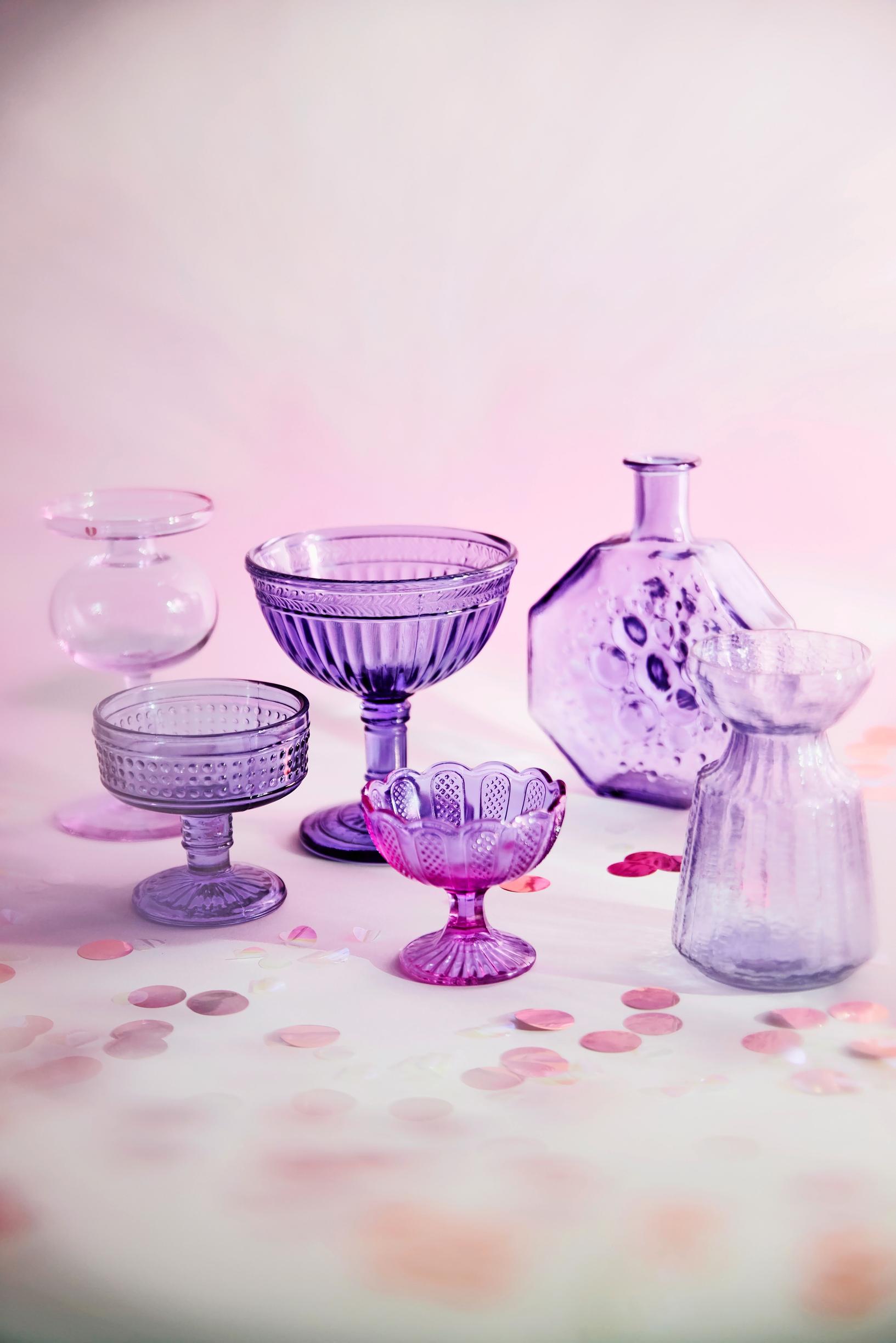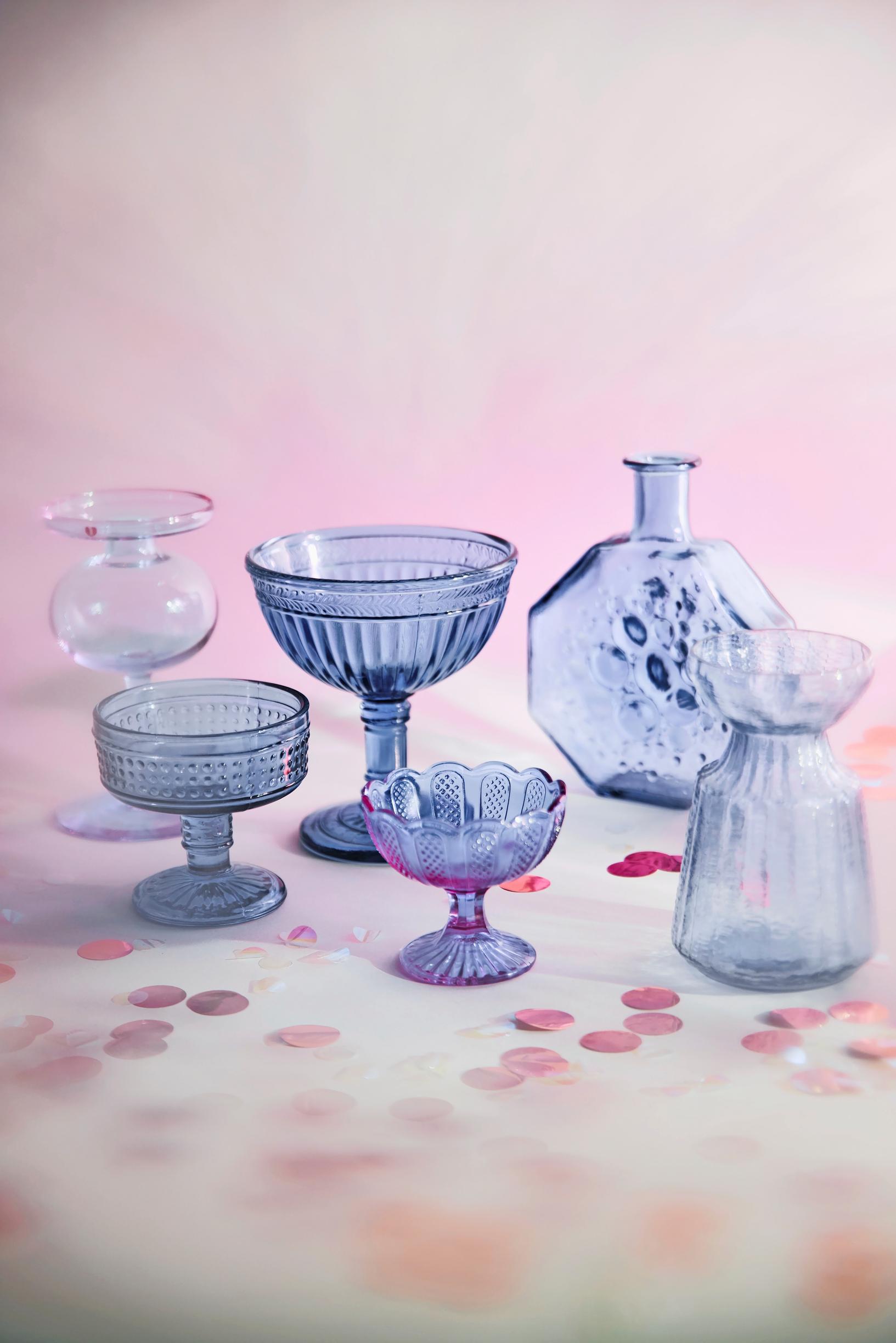It really does change color—check out these pictures of neodymium glassware!
In sunlight, it appears reddish violet—in the evening, under artificial light, it becomes a grayish blue. Neodymium is a rare element with a surprising property when used in glass, and this is also reflected in its value.
What in the world is neodymium? Discovered in 1885, neodymium is a rare earth metal and element which is used in numerous ways such as in strong magnets, lasers, wind turbines, and grow lights. Since the late 1920s, it has also been used to color glass because of its unique property: it changes color in different types of light. In natural daylight, neodymium glass appears reddish or lavender purple, while under artificial light, it can look smoky blue or even green. The thickness of the glass also affects its color.
In Finland, neodymium glass was produced between the 1950s and 1970s by several glass factories. The color can be found in many classics of Finnish design, such as Oiva Toikka’s Flora and Fauna tableware, Helena Tynell’s Aurinkopullo, Nanny Still’s Grapponia series, Erkkitapio Siiroinen’s Veturipullo and Aimo Okkolin’s art glass pieces.
This shade is fairly rare, making neodymium glass highly sought-after and more expensive than many other colors. If you spot it at a good price in a flea market, it’s definitely worth picking up. Its captivating hue truly stands out in natural light.




